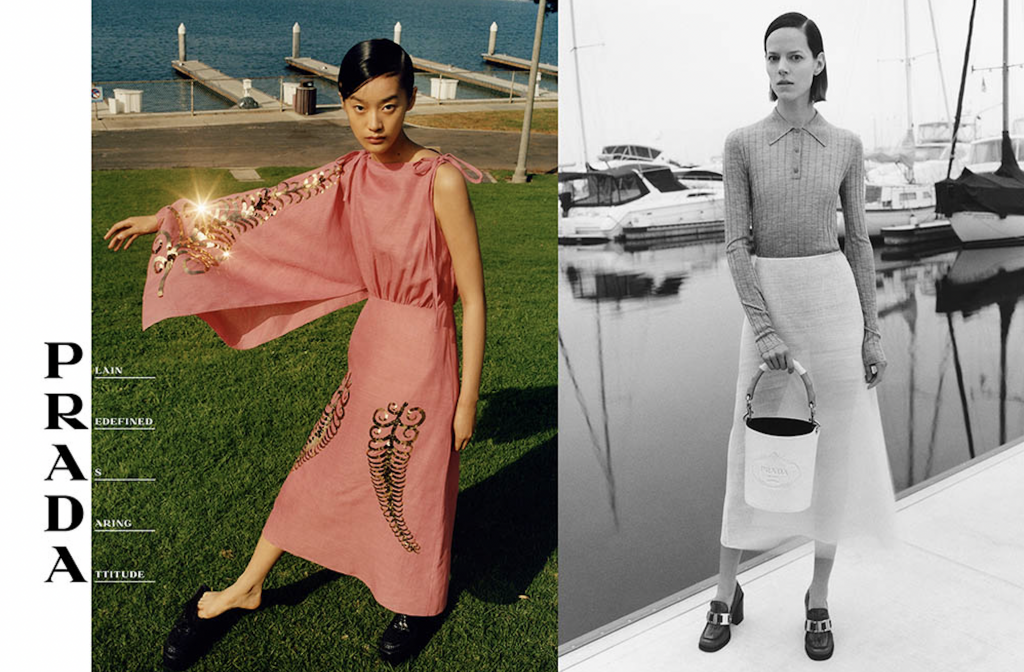In a Prada earnings call in March, in between touting e-commerce sales growth of more than 200 percent for the 2020 fiscal year and citing “stronger retention, average order value, etc.,” as it has eagerly welcomed a younger generation of luxury-happy consumers, Patrizio Bertelli shared a bit of information that may ultimately prove to be the most telling of all. Addressing the enduring array of mergers and acquisitions that has been underway as the pandemic separates the mightiest from the lesser-so and enables cash-flush luxury giants to further bolster their holdings, Prada’s co-CEO said that the Milan-based group is “not planning to sell” Prada or its smaller brands.
The potentially more compelling revelation, however, was that Prada may consider acquiring other brands, a statement that now appears to be more than a mere possibility.
Fast forward a few months and it seems that Prada is actively seeking out a deal that would enable it to build a bigger group under the watch of Mr. Bertelli, along with his wife and longtime Prada creative chief Miuccia, and their son Lorenzo Bertelli, 33. On the heels of stating in March that the family – which owns 80 percent of the Prada Group – was “open” to acquiring other brands, Bertelli is in talks with Mediobanca, Italy’s largest investment bank, about possible deals to take over an as-of-now unnamed brand, but likely one that Prada can acquire for cheap and relaunch under its ownership umbrella, according to a source for TFL.
A Second Try?
Should an acquisition come into fruition, it would not be the first time that Prada has tried to bolster its roster. In fact, in the late 1990s, Mr. Bertelli – who currently shares the CEO title with his wife, Miuccia – sought to take on the likes of LVMH and PPR, now known as Kering, by building Prada into a fully-fledged luxury group. In that vein, Bertelli set the fashion media ablaze when he amassed a 9.5 percent stake in fellow Italian fashion brand Gucci between 1997 and 1998, and then sold off all 5.6 million of his shares to LVMH chairman Bernard Arnault in January 1999.
A few months later, in March 1999, Mr. Bertelli acquired 51 percent of the Helmut Lang brand, and would take over the remaining 49 percent stake several years later. In furtherance of Bertelli’s conglomerate-building quest, Prada revealed in August 1999 that it would secure a controlling stake in Jil Sander. Shortly after that, the group struck a deal to buy out Church & Co. after previously amassing a stake in the English footwear company, and in October 1999, jointly acquired Fendi in a €1 billion deal with LVMH. And still yet, Bertelli also brokered deals that saw the Prada Group amass controlling stakes in Azzedine Alaïa and Car Shoe.
Ultimately, Bertelli, now 75, sold off almost everything, pushed “by [Prada’s] creditor banks” to rid itself of unprofitable brands, the Wall Street Journal reported in a 2006 article reflecting on the wind-down of the ambitious play that could have resulted in an Italian luxury goods powerhouse, one to rival the two French titans, LVMH and Kering.
Swearing off further attempts to build out a bona fide luxury goods conglomerate, Bertelli said in the wake of the sell-offs that Prada would focus on achieving growth from within, namely by expanding into new markets, and in 2006, it sought €100 million ($126.5 million at the time) in funding from Banca Intesa in exchange for a 5 percent stake in the group, a deal that valued Prada at €2 billion.
Skip forward again, this time to June 2011, and Prada made good on its long-rumored plans to go public, listing 20 percent of the company on the Hong Kong Stock Exchange and raising $2.14 billion to “re-finance debt that was slated to mature and to finance its intended growth into Asia” and other market by way of upwards of 200 new store openings.
Strategy & Succession
More recently, things have been looking up for Prada, which has been actively aiming to boost margins and bolster its brand image by revamping its classic products and putting a stop to end-of-season markdowns, and looking to attract younger, digitally-connected consumers by way of a marketing overhaul and an emphasis on e-commerce following a few sluggish years beginning in 2013. And while Bertelli reaffirmed the company’s enduring focus on “internal growth” this spring, ongoing talks with bankers in Milan seem to suggest that he is undiscouraged by the group’s failed attempt to bolster its size by way of outside brands beginning in the late 90s, and in fact, may be looking to try his hand again.
The potential for M&A activity for the Prada Group – in with Mr. Bertelli, personally, maintains 35 percent of the family’s 80 percent stake, and Mrs. Prada controls a larger 65 percent along with her family – comes as succession speculation looms. Bertelli has stated that he intends for the reigns to eventually pass to his son Lorenzo, who joined the Prada Group board this spring and has served as the company’s head of marketing and CSR since 2018. To date, a timeline for such a move has not been identified. However, sources suggest that Lorenzo, an ambitious new member of the family firm, who is said to have his mother’s backing in ascending to the CEO role in the not-too-distant future, could take over the business in as few as two to three years.
If his father has anything to do with it, that business will be at least one brand mightier, putting Prada in a stronger position to achieve greater future growth and assuming this time is different than the last, maybe even enabling it to take a spot within the ranks of the industry’s most well-known groups.
UPDATED (November 18, 2021): Mr. Bertelli confirmed this week that he plans to put his son Lorenzo in charge of the Italian fashion company within the next three years, and also reiterated that Prada is not looking to sell. “I’ve always been interested in buying, never selling,” he stated, noting that the group could grow further by acquiring small Italian textile and manufacturing companies.
This article was published for TFL subscribers first. Join today to gain access to all of our exclusive content.











